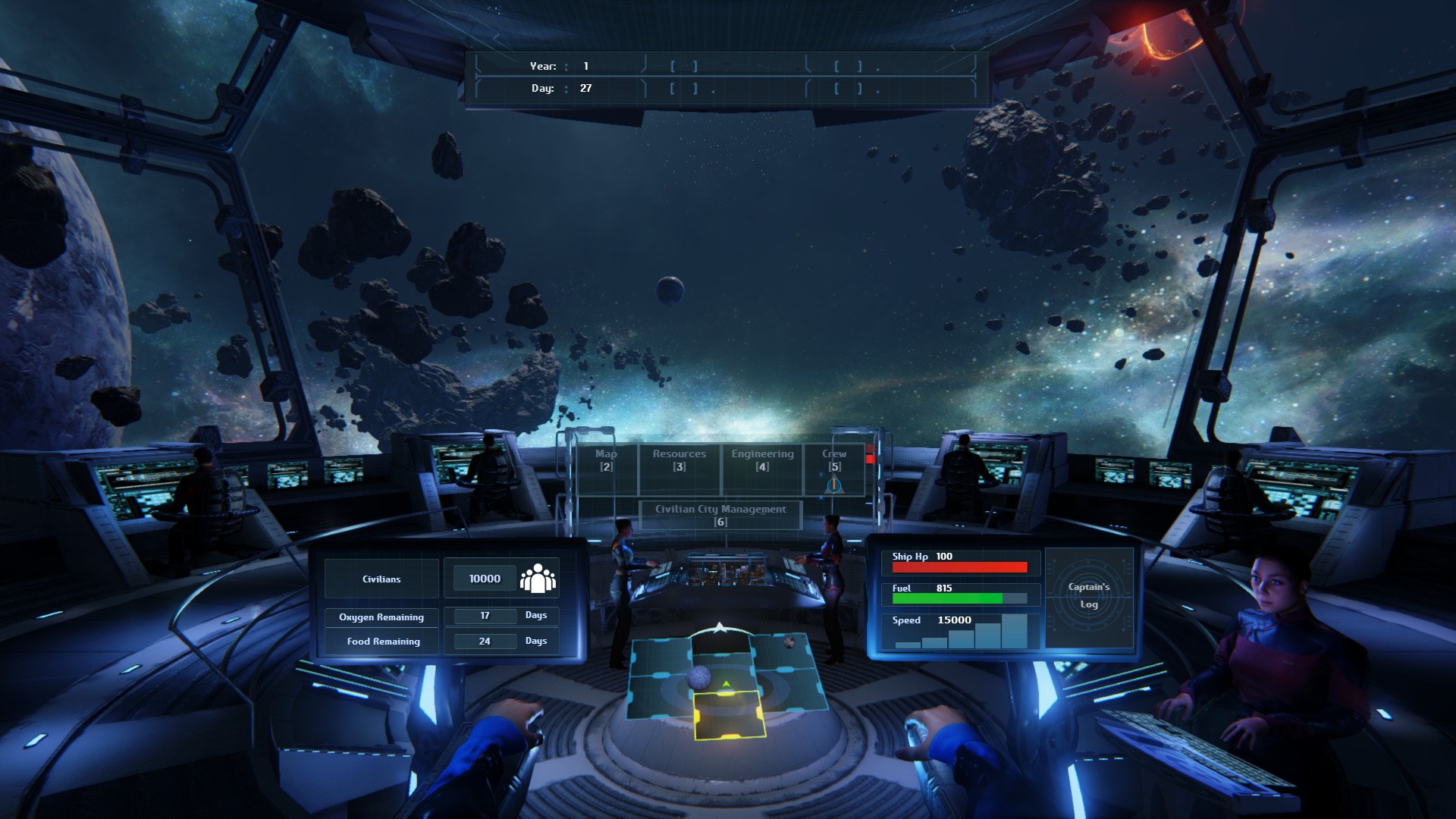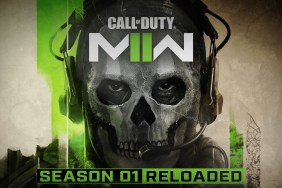Battlestar Unspectacular.
I’m the captain of a capital spaceship housing the last remnants of humanity, tasked with traveling to a faraway planet in order to ensure the survival of my dying race. Hot on my tail is the Skorn, civilization’s mysterious, alien executioners, who are determined to wipe me, my crew, and the rest of the unlucky buggers stuck on my communal ship with me from existence.
This should be exciting, but instead I’m stuck in an endless, infuriatingly slow crawl to the next planet. Then upon reaching it, I will be prompted to select from a few options as to what to do on its surface, all of which lead to very limited, if any, interaction from me directly. This is Into The Stars, Fugitive Games’ spaceship simulator that set out to create a 3D FTL with what is essentially the plot of Battlestar Galactica, but somehow winds up being as uninteresting as possible.
I’m not sure how developer Fugitive Games managed to make so much of Into The Stars so monotonous. The groundwork is most certainly there for an enjoyable space exploration simulator, from its beautifully rendered Unreal Engine 4 galaxy through to its panic-inducing resource management and city-management features. But each of its most interesting features is marred by the game’s insistence on taking control out of the player’s hands, with it tirelessly devoted to doing the majority of the fun bits for you.
As such, you’ll spend much of your time slumped in your captain’s chair, watching your spacecraft float towards your next destination as the dead-eyed staff members in your bridge ceaselessly tap away at their computers, refusing to flinch even when giant alien monstrosities appear before you and begin killing people with their laser beams. It’s difficult to blame them for looking so bored, though, considering they’ve spent much of their life on a ship that moves with the pace of a depressed tortoise.
Outside of these nameless, faceless employees you’ll also take charge of six crew members, each with their own unique stats that will aid you on your journey. Commanders are good at providing authoritative control over potentially hostile situations during shuttle missions, while a good pilot will help ensure the safety of your crew on manned expeditions, and so on. Each time you assign a crew member to a task that requires expertise in a specific field, their rating in that area will increase. This means that if your favored medic dies in an alien attack during a trip to a planet, you can level up another crew member to become your new medic by assigning them to that role in the future.
However, outside of these stats your crew members have no real defining characteristics, with you only afforded a photo of them and a short bio explaining their motivations and their personality traits. I’m uncertain whether or not these bios actually impact any aspect of the game, given that they all just do as I tell them regardless of whether they’re supposedly hot-headed or submissive or arrogant, but if they do, the game fails to make it known.
But Into The Stars’ biggest failing is its insistence upon being Oregon Trail in space, with every decision ultimately decided by the roll of a dice. When you approach a planet you’ll be given the option of sending a manned shuttle down to its surface, deploying a research probe, or digging beneath its surface with a mining rig, but the success of these missions is determined by an arbitrary percentage. Sometimes it’ll work and sometimes it won’t, but the player has absolutely nothing to do with those set of circumstances aside from choosing whether it’s worth sending out their crew in accordance with the game’s predicted rate of success.
The most interactivity provided in this process is when you send down a mining rig, which will prompt a short mini-game in which you’re tasked with drilling into resources whilst avoiding red blocks that will destroy your rig. It’s not a great deal of fun. The resource probe presents the most hands-off experience, with you only given the opportunity to choose which pilot you wish to send out before they return to your spacecraft with their findings. Considering that this is the most dull option, it’s also arguably the most beneficial, given that you can send out as many resource probes as you see fit and they frequently bring back impressive resource quantities. When I came across a planet which featured a predicted high success rate of landing safely upon its surface, I routinely sent out the resource probe until my spacecraft was full. There was no penalty for doing this, aside from having to watch the same short, unskippable cutscene over and over again.
The shuttle missions present the biggest issue with the game, though. Ostensibly providing the player with a multiple-choice situation, these missions each have a static success percentage which suggests that, no matter which option you choose out of the three given to you, your input in this process doesn’t make any difference whatsoever. This might not be the case, but the game doesn’t explain what this predicted rate of success means, and so with each shuttle landing I simply picked the first option and hoped.
This is representative of the overarching issue with Into The Stars, with its perilous journey across the galaxy being entirely determined behind a curtain that is never once pulled back. You’ll simply look at a few lines of text, send out your most skilled crew members, and then wait to see if they successfully did the thing that you told them to do.
All of this contributes to the player being potentially the most hands-off captain in the entire galaxy, willfully sending crew members to what might be their certain death without ever once getting up out of your chair and actually doing something meaningful. Even entering into “captain mode” with a press of the 'C' key, which takes you from a third-person to a first-person view wherein you can access the game’s selection of menus, sees you being granted with a very limited amount of control over the inner-workings of your ship.
The aforementioned city management aspect of the game, which had the potential to be a neat little additional feature, is reduced to you erecting a building every now and again in order to make your citizens healthier, happier, and more law-abiding. I wasn’t exactly expecting Cities: Skylines levels of intricacy, but it would’ve been preferable if it warranted something a little more substantial than two clicks of my mouse.
Then there’s the randomized crew events you’ll be frequently inundated with, which present you with what should be monumental problems such as a disease outbreak or a political uprising, but that can swiftly be solved by assigning one of your crew members and waiting a handful of seconds for them to rectify the issue. I would predict that Fugitive Games made the speed of your ship so incredibly slow so that you were afforded more time to tinker with these options, but each of the tasks can be be completed in less than 10 seconds, meaning you’ll spend most of your time looking at the rear-end of your ship, waiting for it to sluggishly reach the next planet on your map.
The most excitement that can be eked out of your slow crawl to the game’s climax is in its combat, which will see you confronted with up to three enemy vessels, prompting an interesting strategy mini-game in which your crew mans your weaponry and defense systems for what is essentially a more complex round of rock, paper, scissors. With you and your enemies’ attacking and defensive capabilities being reduced to a selection of three colors, your aim is to successfully block your enemy's firepower by choosing whether they’ll be firing red, yellow, or blue ammunition in your direction, with the enemy then doing the same for you.
When you’re taking on a lone Skorn ship, it’s easy to swiftly dispatch of them without facing much opposition, but when you’re tasked with defeating three of them it becomes a more challenging proposition, with you being forced to successfully deal with incoming fire whilst dealing damage yourself. This scenario can prove to be potentially fatal, and having your ship’s hull exposed incites panicked screams among your populace as their numbers are slowly, painfully diminished.
But these encounters aren’t enough to save what is a very mediocre game. Conceptually, Into The Stars had the potential to be a compelling spin on a formula established by the immeasurably superior FTL, but across the board, it is littered with uninspired and dull design choices. Anything resembling a good time is left up to your lackeys while you remain stuck to your captain’s chair, blindly dishing out orders that lead to unforeseeable conclusions, leaving all the best bits up to your crew members as you watch your unfathomably slow space snail of a ship sail to another boring location.
-
Pretty fun combat
-
Lovely Unreal Engine 4 visuals
-
Lack of interactivity
-
Slowly floating through space is a laborious task
-
City management is reduced to a couple of mouse clicks
-
Nothing exciting happens when you land on a planet
-
What do the shuttle missions' success rates even mean?!
Into The Stars
-
Into The Stars #1
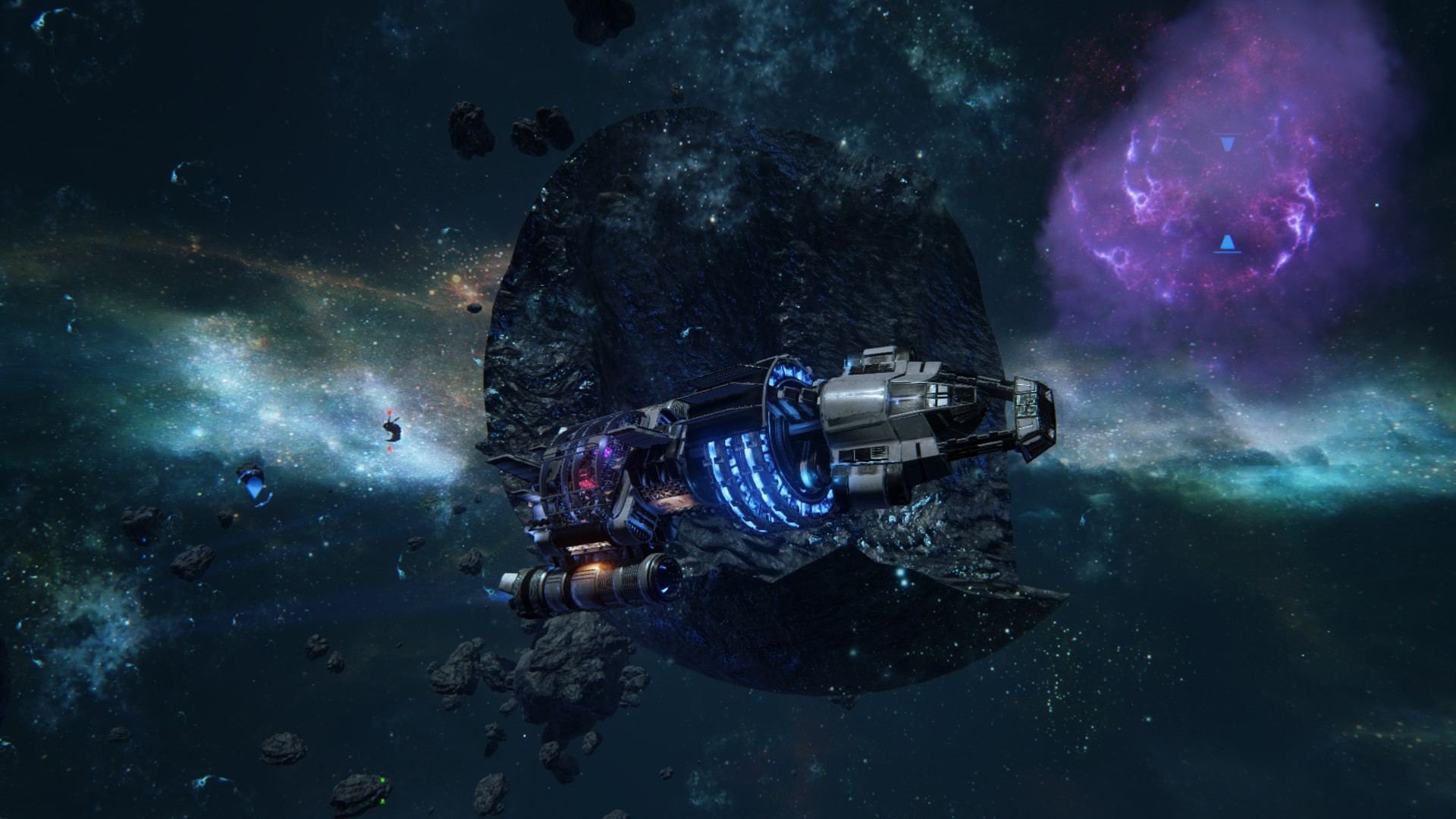
-
Into The Stars #2
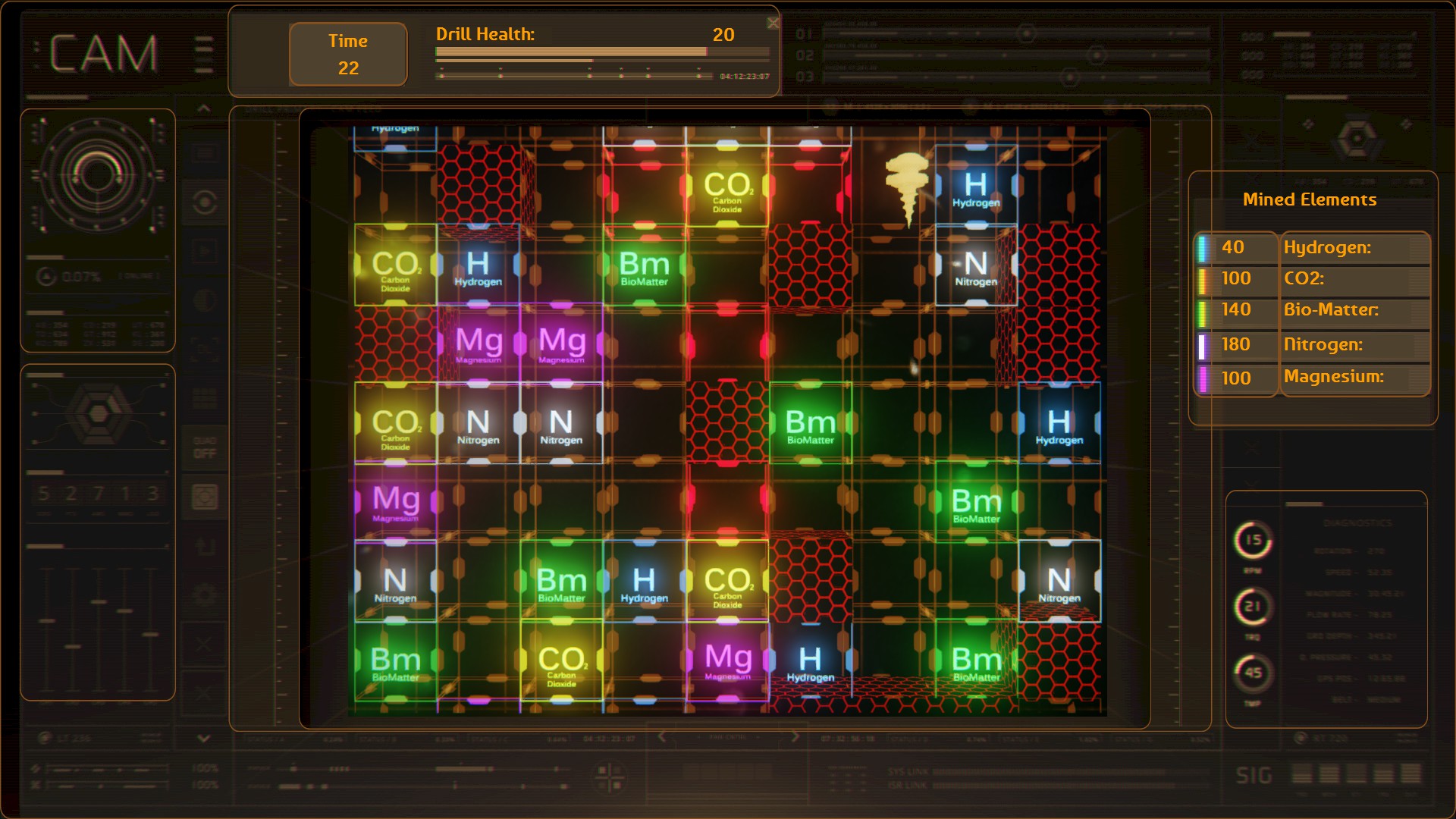
-
Into The Stars #3

-
Into The Stars #4
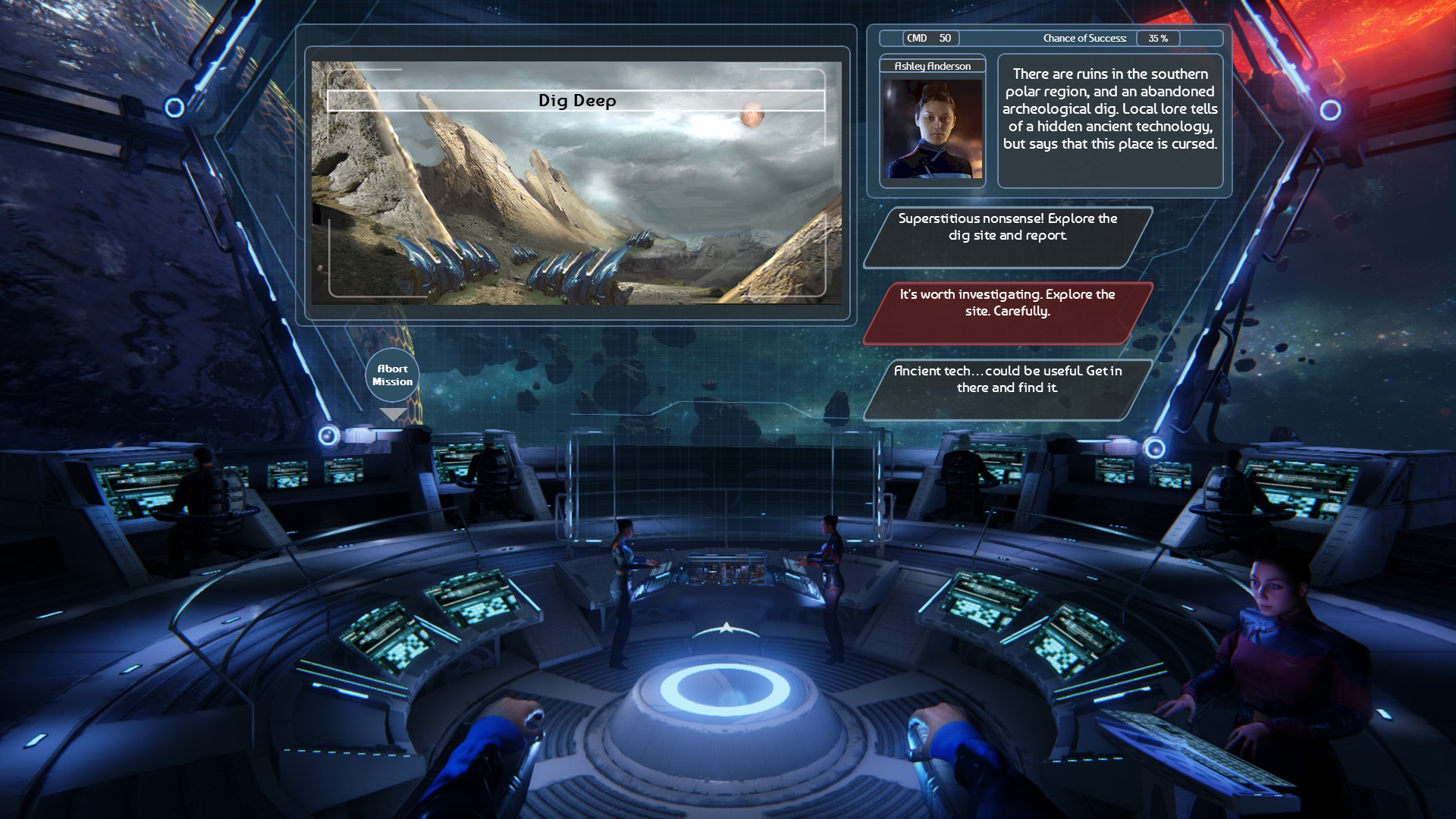
-
Into The Stars #5

-
Into The Stars #6
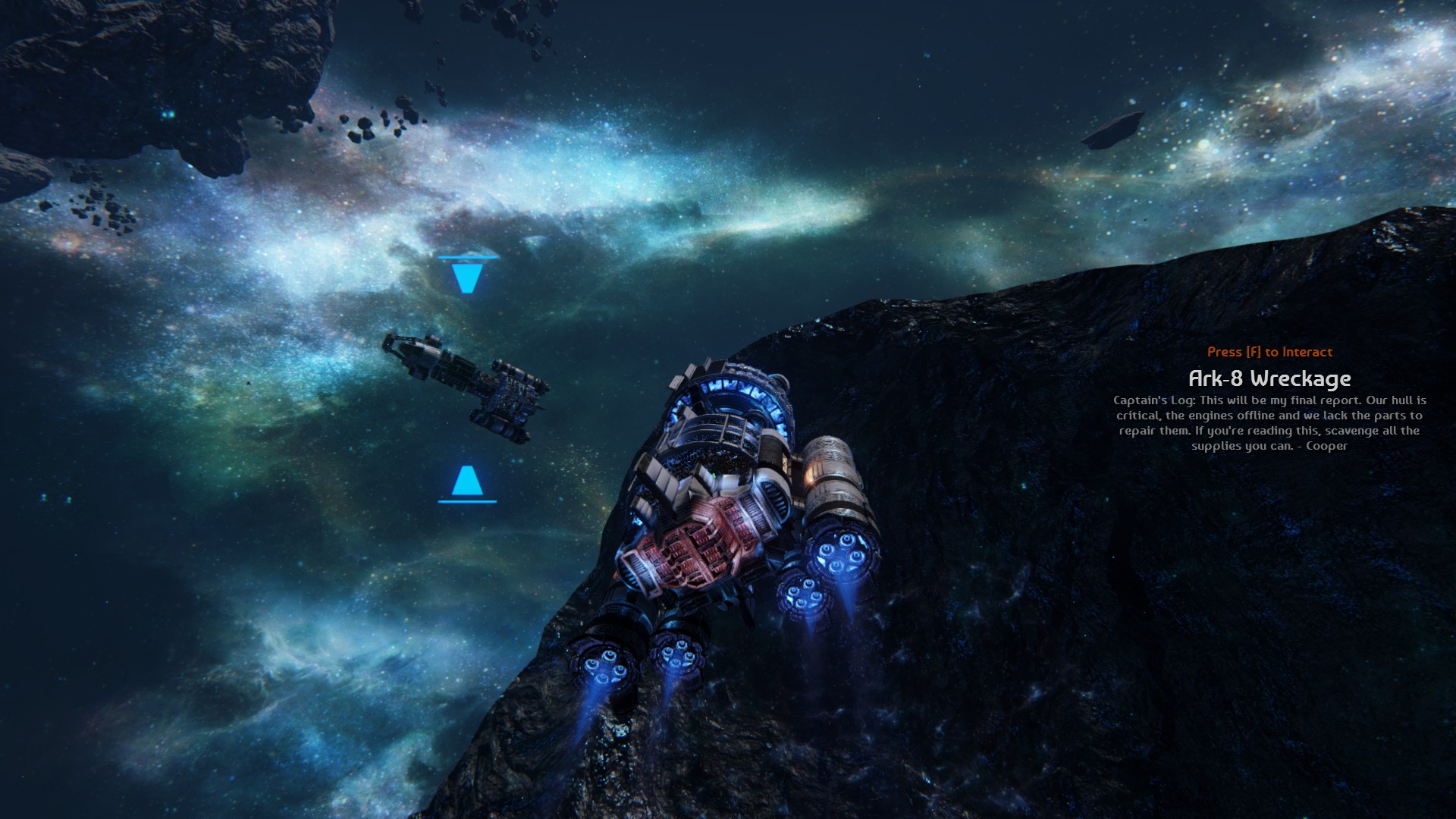
-
Into The Stars #7

-
Into The Stars #8

-
Into The Stars #9
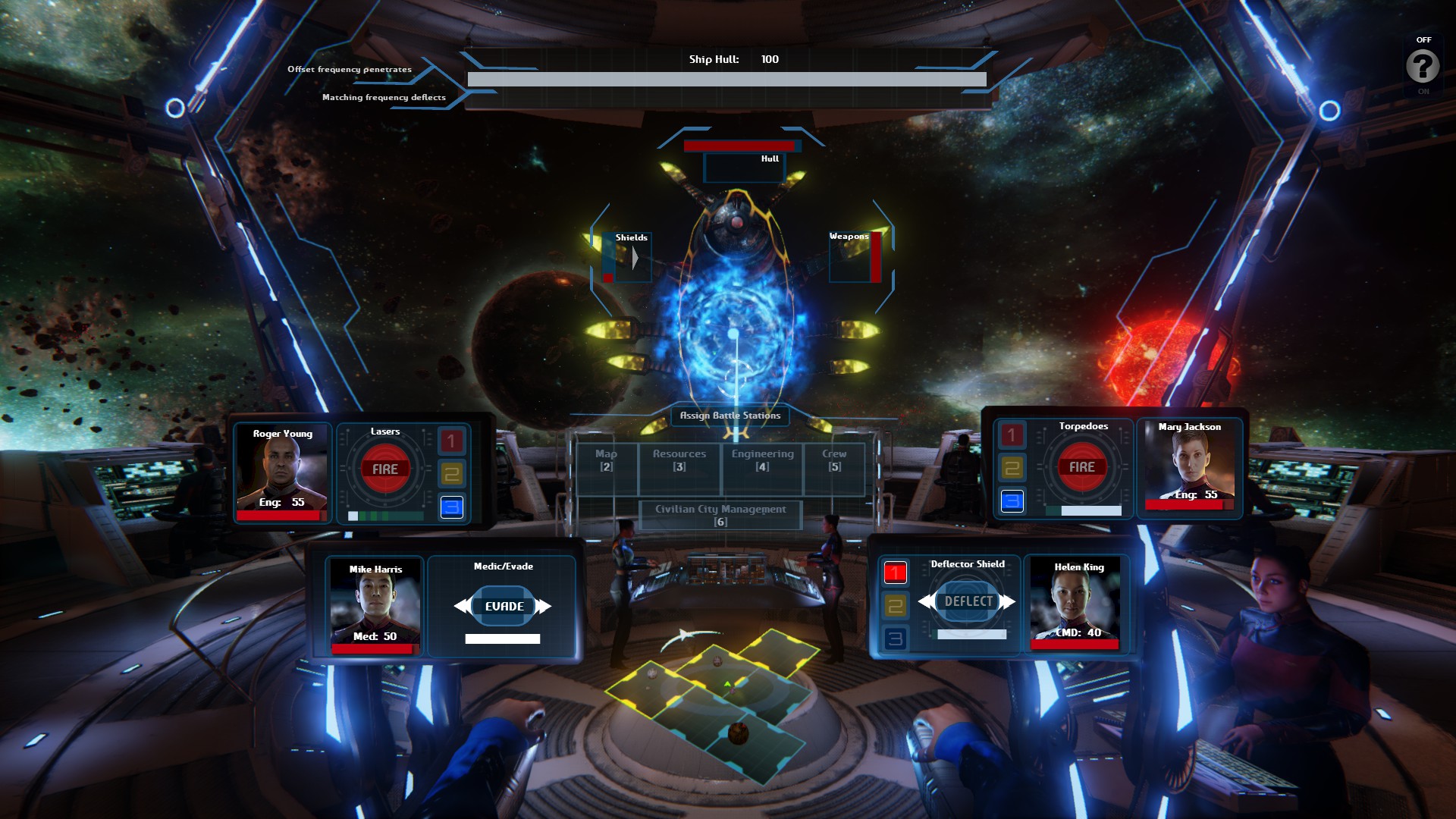
-
Into The Stars #10
